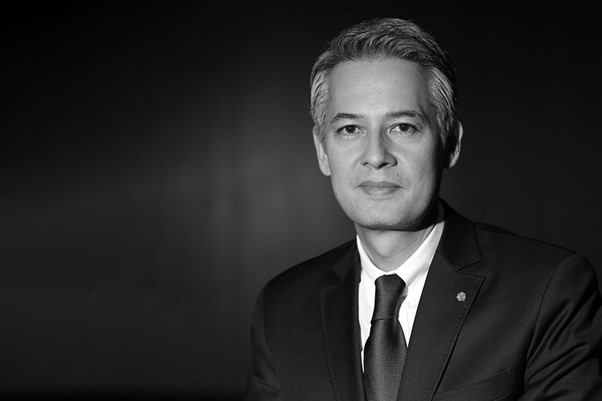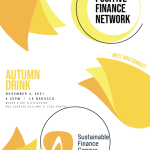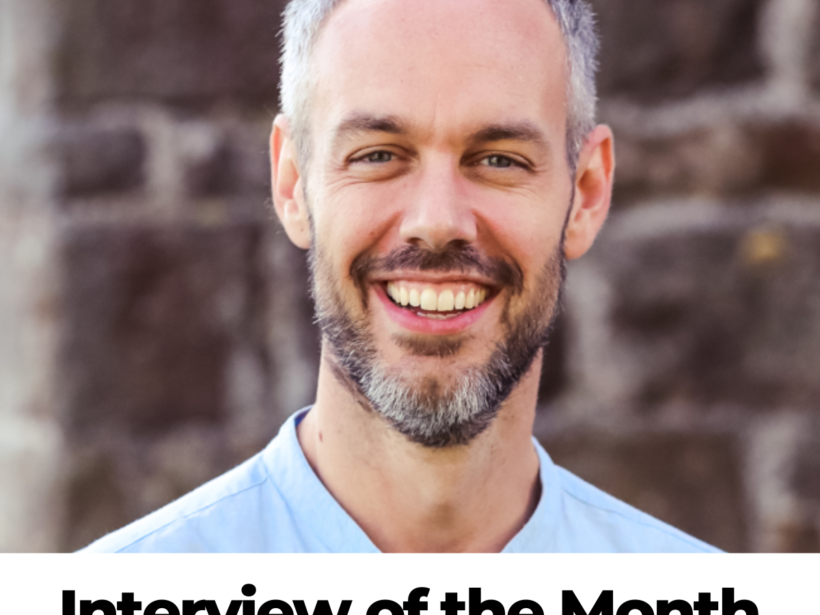
Gregoire Haenni, CPEG: Cop needs to be a catalyst for governments and investors to raise ambitions
Grégoire Haenni is one of the newest members of Sustainable Finance Geneva’s (SFG) Strategy and Surveillance Committee after joining earlier this year. He is chief investment officer of the CHF 20 billion public pension fund for the state of Geneva (CPEG) and also sits on the board as vice chair of the Institutional Investors Group on Climate Change (IIGCC), a lobby group made up of 350 European institutional investors with €42 trillion in assets.
Last week, ahead of the Cop26 summit in Glasgow the IIGCC joined a wider group of 733 investors representing more than half of all managed assets globally calling for governments to adopt a raft of measures to keep global warming within the 1.5C goal. These include measures to stop the estimated $423bn in fossil fuel subsidies spent by taxpayers each year, as highlighted by UNDP last week.
Speaking ahead of the UN climate talks, Haenni shares his expectations for Cop, how investors can use their influence to mobilise finance needed to deliver on the Paris climate goals, and where the Swiss pension industry stands in greening its portfolios. With Geneva’s sustainable finance conference, Building Bridges, taking place on 29 November, hot on the heels of Cop26, he also shares his views on what to expect.
Starting then with Cop26 this week, what are your expectations and what would you like to see come out of the summit?
Cop26 is different from the others because it’s the last chance to tackle climate change. And it will be, in my opinion, a catalyst for governments, corporates and investors to make new and more ambitious commitments. Greater climate action will obviously impact financial markets and we’ll need further measures to incentivise private capital to be part of the solution. Strengthened regulation is also needed to put pressure on large investors to adapt their portfolios towards climate-friendly strategies. The absence of a global reporting framework for climate risk and net-zero transition is another topic we expect to be addressed.
So, coming out of Cop, I’d like to see more clarity on governments’ commitments – but also in delivering on those commitments. Governments have not done much so far and I hope this is going to change after Cop26. I would also like to see an agreement on the global carbon price, and measures to incentivise blended finance. It’s not easy to have governments co-investing with private investors or institutional investors so I hope they will find a solution and help incentivise investors to co-invest with them.
Underpinning the talks this week is how developed countries are going to plug the shortfall in climate finance promised to poorer nations. What should countries be doing to deliver on these broken promises – and what’s the role of the private capital?
The biggest issue here is that we need the commitment from governments and the timing is not really ideal because of the pandemic. They’ve had to increase debt significantly to solve the crisis, so they’ll need now to find more funds to invest in climate change. So, the timing is not ideal but this is another reason why they should incentivise institutional investors to co-invest. I’m really open to investing in the transition, however, I would like to have guarantees for our beneficiaries and this is what I expect from governments, to protect and preserve our investments.
How can investors step up during Cop26 and what do you think are the biggest hurdles here?
A big challenge for investors is to broaden the environment framework because it’s not just about climate change but it’s also about nature. Some 50 per cent of world GDP depends on nature therefore I think we should address the environment as a whole instead of just focusing on climate risk, and I think the industry is moving in that direction. So water, biodiversity, reforestation – all these things need to be tackled at the same time. Also, the big challenge for institutional investors is to address the UN sustainable development goals (SDGs) and not just climate. So this is another big constraint that we have to take into account.
Turning to pension funds here in Switzerland, is the sector doing enough to address climate and sustainability issues in its portfolios?
What I can say is that the pension funds industry is taking climate change very seriously. The majority of Swiss pension funds have committed to become net zero by 2050 and I see today pension funds incorporating this risk into their investment strategy. Impact investing is also gaining ground and institutional investors are exploring avenues of collaboration. So this is very positive. Now, there is an area where we could maybe improve this engagement: we are becoming very schizophrenic, because on one hand, we have to manage the carbon emissions of our portfolio and on the other hand, we need to be shareholders in order to engage with those corporates. So we need to manoeuvre the portfolio around those two opposite objectives. And this is really unclear for pension funds.
What’s your outlook for the pension industry and where do you see institutional investors playing the biggest role in tackling climate change?
Engagement and impact investing are the two main areas where our community can continue to play an important role in the fight against climate change and global warming. According to the OECD, equities and bonds accounted for nearly 75 per cent of pension fund investments on average at the end of 2020. This shows that the pension industry has the means to put pressure on companies.
One example was 26 May when major decisions were delivered against ExxonMobil and Royal Dutch Shell –the second and fourth biggest carbon emitters in the world, respectively –for their failure to respond to the climate crisis. These decisions may mark a critical turning point in the fight between climate activists and Big Oil producers.
What do you see as the biggest risks of climate change to pension funds?
The major risk in my opinion is the speed of change. A lot of pension funds have committed to net zero and are working on a climate strategy but the speed of change is still not adequate. Also, I see regulation coming into play putting a lot of pressure on pension funds, or institutional investors if you prefer, and there is also an image risk if we don’t move rapidly. Also, we’ll need to fund the energy transition to clean technologies and it is vital that we create blended finance models that can be replicated in the future by other investors.
Building Bridges will be taking place at the end of November. How do you think some of the discussions from Cop around sustainable finance could be developed further at the conference and ensure that like Cop, there are meaningful outcomes from the summit?
Ten years ago, we were debating on why we should tackle climate change; five years ago, it was about how we should do it, and today we have to do it. We have to invest in the transition. So Building Bridges I think comes in a timely manner. There are investment projects in progress as part of the summit – and I’m working on one of them – that will be crucial because we have to catalyse funds into projects that have a positive impact on the environment. We have to become more concrete and show results. So I have a lot of hopes for Building Bridges. It’s good for Geneva and it’s good for Switzerland.
This article was published in collaboration with Geneva Solutions



